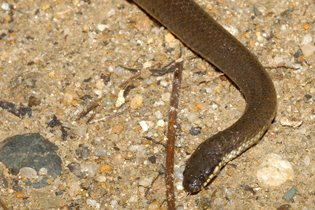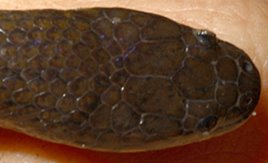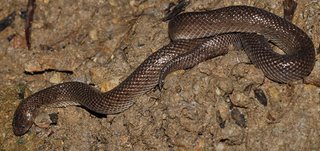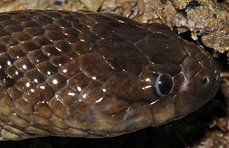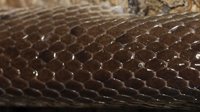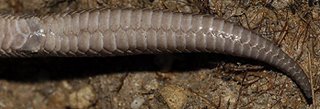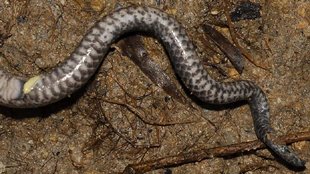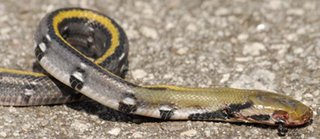 A Shore Pit Viper (Trimeresurus purpureomaculatus) was sighted by Charlene Yeong in Lim Chu Kang mangroves on 28 August 2006, at about 9 pm. This venomous snake, as in my previous sightings in Pasir Ris Park Mangrove Swamp on 7 May 2006 and 18 August 2006, was lying on the ground coiling its body around mangrove roots and branch twigs. So please watch where you step and do not kill the snake under your feet! Oh, of course this is for your own safety too.
A Shore Pit Viper (Trimeresurus purpureomaculatus) was sighted by Charlene Yeong in Lim Chu Kang mangroves on 28 August 2006, at about 9 pm. This venomous snake, as in my previous sightings in Pasir Ris Park Mangrove Swamp on 7 May 2006 and 18 August 2006, was lying on the ground coiling its body around mangrove roots and branch twigs. So please watch where you step and do not kill the snake under your feet! Oh, of course this is for your own safety too.Somehow, I found a strange and unproven correlation between the presence of Short Pit Viper and the absence of crustacean-eating homalopsines (Cantoria violacea, Fordonia leucobalia and Gerarda prevostiana), and vice versa. This is the trend for all 6 nights:
4 September 2005 (Cantoria violacea)
7 May 2006 (Trimeresurus purpureomaculatus)
18 August 2006 (Trimeresurus purpureomaculatus)
19 August 2006 (Cantoria violacea and Fordonia leucobalia)
27 August 2006 (Fordonia leucobalia and Gerarda prevostiana)
28 August 2006 (Trimeresurus purpureomaculatus)
Could environmental factors be the cause of this observations?
